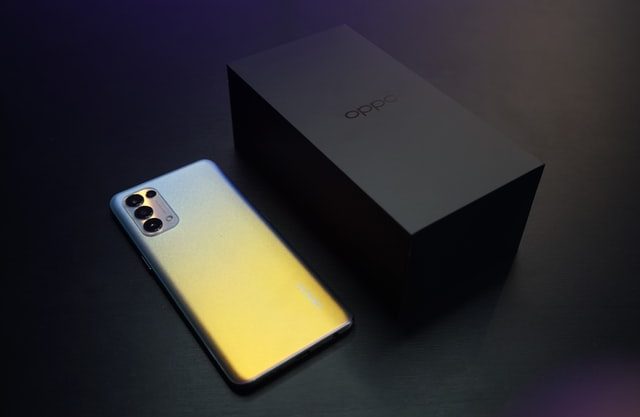Do you remember the times when the entire field was covered in blue & green?? No, no, I am not talking about India & Pakistan cricket match. Recall when OPPO & VIVO had painted our local electronics market green & blue with large hoardings, big celebrities & vibrant colors.

On the face, it seems like two smartphone RIVALS are fighting neck to neck in the emerging Indian market for additional chunks of pie like two separated brothers Mukesh & Anil Ambani. But what if I tell you that both OPPO & VIVO share the same parent company. Shocked right!!
To add to your plight, not only OPPO & VIVO, but One Plus, Real Me & I-QOO also share the same parent company – BBK Electronics, the #1 smartphone company with more than 40% market share and highest-selling smartphone company in India. But why so many brands and isn’t it a waste of money & resources??
In this Strategy Story, I will talk about what is BBK Electronics & why its multi-brand marketing strategy is so successful. Just three brands from BBK: Oppo, VIVO, Realme, sold 262.7 million units in 2020, outperforming bigwigs such as Samsung and Huawei.
A brief on BBK Electronics
Guangdong BBK Electronics Corporation was established on September 18, 1995, in Dongguan, Guangdong Province, China. Founded by Duan Yongping, an experienced entrepreneur in the electronics sector in China, BBK started its own manufacturing firm. Thanks to its massive offline retail presence & celebrity endorsements with catchy slogans, BBK gained a strong foothold in the Chinese market.
Later on, due to the threat of new entrants like Sony & Duan and a massive legal piracy suit, Duan decided to split its business into three separate divisions around that time:
1) Audio Visual
2) Communications
3) Education Electronics.
The Audio-visual division led to the formation of OPPO in 2004, a sub-brand that subsequently ventured into smartphones in 2008, particularly after Steve Jobs introduced the iPhone in 2007.
Later in 2009, the Communication division created VIVO, led by one of the BBK’s veterans. After gaining robust market share in China, OPPO launched a sub-brand in 2013, OnePlus & later in 2018, launched Real Me. While OPPO was busy creating sub-brands, VIVO also launched I-QOO in 2019.
But the mystery remains, why this complex web of subsidiaries & holding structure & multi-brand marketing strategy, and how does it benefit BBK Electronics?? Before we delve into details, let’s first find out what is Multi-brand.
What is Multi Brand Marketing Strategy?
Are you a Clinic Plus user or a Dove user? Which washing powder is used in your household – Wheel, Rin, or Surf Excel! Mind you; all these brands are from a single company, Hindustan Unilever Limited (HUL). Business Strategies that set FMCG giant “Unilever” a class apart.
But you get it right; an average Wheel user will not be a Surf Excel user & vice versa. So, to cater to the needs of different user segments, companies come up with multiple brands. This is called Multi-brand Strategy.
In essence, a company adopts a Multi-Brand Marketing strategy to promote different brands in the same category to cater to different customer segments and capture a higher willingness to pay. Companies position the brands by positioning them as competitors and creating an individual brand identity to gain a higher market share. LVMH does this amazingly with its 75 brands. Read how.
To further understand, let’s enumerate some basic steps of Marketing Strategy:
- Product Market Mix
- Segmentation
- Targeting
- Positioning
- Pricing Strategy
- Channel Strategy
- Brand Awareness Strategy
Before product development, Organization generally starts with the segmentation of its typical customer, aligning with its vision and mission by using psychographic analysis (Lifestyle, needs, behavior, willingness to pay, etc.). The segmentation is usually carried out by the field market research and clustering technique.
After identifying the segment, Pricing, channel & awareness strategies are formed respectively to target that particular segment & consequently, the brand positioning is done! An organization typically ventures into multiple brands to cater to several market segments and not just one, as identified during segmentation. Obviously, it depends upon how deep their pockets are!!
Though there are some major drawbacks of Multi Brand marketing such as Loss of Confidence among customers as they feel that organization is very aggressive on profits instead of them, market cannibalization due to the overlapping user base, intricate segmentation & awareness, however, there are some unique advantages as well such as:
- Leveraging the existing customer base for cross-selling the new brands or products of that company.
- Potential to position your brand as market leader & capture full potential.
- Cater to customers who like to switch brands.
- Innovation at individual brand, leading to clear cut segregation and identification.
How BBK Electronics’ effective Multi Brand Marketing Strategy led to its success
Product Market Mix:
What better time to enter into the smartphone market when its middle class and rural internet penetration both are upward ticking?
Leveraging such perfect conditions, OPPO/VIVO entered into Indian market primarily to woo the rural customers. India’s rural mobile user base was ~37 Cr back in those days, with most of them having low-cost feature phones.
As they say, Market segmentation is an art, not a science. BBK left no stones unturned to target the rural audience, but with no technical jargon and fancy drama, but simple yet effective customer-centric offerings: Best Selfie Camera and Music.
But, how do you position yourself in a market with mammoth incumbents like Samsung? And, that’s when they broke the perception of cheap Chinese products through an important Point of Differentiation (PoD) – Innovation!!
OPPO started experimenting with Sony by introducing low light photography, 5X Zoom lens & retractable motor for front & back camera. Whereas, VIVO became BBK’s R&D unit by pioneering Hi-Fi Audio, World’s thinnest smartphone, In-display finger sensor & 60 W powerless charging & whatnot. These innovations became the core advertising and marketing strategy for these brands by BBK Electronics.
Pricing & Channel Strategy:
Though Flipkart had made an urban user habituated to online shopping, BBK knew that an average rural person is not accustomed to buying something without touch and feel.
Let me remind you, the modus operandi of BBK has always been solid retail network. To assure customers of both quality and after-sales support, BBK launched into the omnichannel space.
BBK played on its past strengths, i.e., celebrity endorsements, event sponsorship (VIVO IPL), and killer social ads to compensate for lack of credibility again. Sensing influence of retailers on customers in India, BBK adopted the Pull strategy by offering heavy margins, as high as 20%, to retailers, making retailer their marketing agent.
On the pricing front, keeping in mind the availability of substitutes, BBK adopted competitive and price-based penetration pricing instead of product-based. Despite knowing that lower prices and humongous R&D & marketing costs would eat into their profitability, they took the risk.
Leveraging Existing Infrastructure: OnePlus
Building onto OPPO’s manufacturing line and supply chain OnePlus entered India. The brand slogan “Never Settle” vividly depicts the intention of OnePlus to gain Market share by threatening the existence of big overseas stable brands by introducing affordable (30-40K) but premium smartphones. Never Settle: The Strategy of OnePlus
By limiting supplies through Online and Invite Only presence, One Plus built suspense & created FOMO among innovators & early adopters’ segments of consumers & popularized by Word-of-Mouth publicity.
Negligible marketing costs coupled with OPPO’s resources made OnePlus a highly profitable brand in BBK’s kitty.
That’s another story of how Xiaomi launched POCO to take on OnePlus. Just see how evident is that—OnePlus’ slogan: A Flagship Killer, POCO’s slogan: The ultimate Flagship Killer.
A relatively new entrant, Realme used BBK’s massive scale to flood the market with around 27 phones in just two years at rock bottom price. Everything about the brand is designed with Redmi in mind, even the name – Realme, so much for the Point of Parity (PoP).
BKK has recently launched another brand I-QOO into the premium 5G segment. There’s not much talk about it now, but it seems to have a separate division for its 5G business.
Duan Yongping, a visionary leader in the electronics market, created an empire with a 25% global market share, overtaking Samsung by selling 26 Cr smartphones alone in 2020.
Though a scant public-facing figure, he knows how to convert his strengths to opportunities. BBK Electronics brands, with their multi-brand marketing strategy, have been catering to various segments, but they have always been consistent in their approach, and that’s where the differentiation occurs.

-AMAZONPOLLY-ONLYWORDS-START-
Also, check out our most loved stories below

Why did Michelin, a tire company, decide to rate restaurants?
Is ‘Michelin Star’ by the same Michelin that sells tires, yes, it is! But Why? How a tire company evaluations became most coveted in the culinary industry?

Johnnie Walker – The legend that keeps walking!
Johnnie Walker is a 200 years old brand but it is still going strong with its marketing strategies and bold attitude to challenge the conventional norms.

Starbucks prices products on value not cost. Why?
In value-based pricing, products are price based on the perceived value instead of cost. Starbucks has mastered the art of value-based pricing. How?

Nike doesn’t sell shoes. It sells an idea!!
Nike has built one of the most powerful brands in the world through its benefit-based marketing strategy. What is this strategy and how Nike has used it?

Domino’s is not a pizza delivery company. What is it then?
How one step towards digital transformation completely changed the brand perception of Domino’s from a pizza delivery company to a technology company?

BlackRock, the story of the world’s largest shadow bank
BlackRock has $7.9 trillion worth of Asset Under Management which is equal to 91 sovereign wealth funds managed. What made it unknown but a massive banker?

Why does Tesla’s Zero Dollar Budget Marketing Strategy work?
Touted as the most valuable car company in the world, Tesla firmly sticks to its zero dollar marketing. Then what is Tesla’s marketing strategy?

The Nokia Saga – Rise, Fall and Return
Nokia is a perfect case study of a business that once invincible but failed to maintain leadership as it did not innovate as fast as its competitors did!

Yahoo! The story of strategic mistakes
Yahoo’s story or case study is full of strategic mistakes. From wrong to missed acquisitions, wrong CEOs, the list is endless. No matter how great the product was!!

Apple – A Unique Take on Social Media Strategy
Apple’s social media strategy is extremely unusual. In this piece, we connect Apple’s unique and successful take on social media to its core values.
-AMAZONPOLLY-ONLYWORDS-END-



















